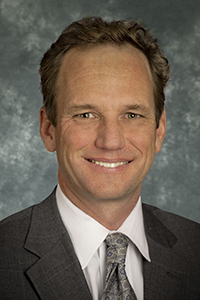Message from the executive director: Requesting state funds to secure your benefits
4-minute read
Requesting state funds to secure your benefits

The beginning of a new legislative session is almost here, and ERS is hard at work on our biennial Legislative Appropriations Request (LAR). Times like these make me look back to all we have accomplished over the past two sessions. Some people say, “The only time you should look back is to see how far you’ve come.” Well, we’ve come a long way. In 2021 and 2023, the Texas legislature made great strides in its efforts to place the ERS Retirement Trust Fund on the path to actuarial soundness. With increased state funding, the plan is now on track to be fully funded by 2054. Not only that, but in January 2025, ERS will be in position to pay a cost-of-living adjustment (COLA) to retirees who have been retired for at least 20 years, as set forth in statute. You can read more about it on pg. 3 and in the December edition of this newsletter.
Having a sound fund is important for all members of ERS, whether you’re a current retiree, or a beneficiary who might be getting payments for the next few decades.
Now that the Retirement Fund is back on stable footing, we expect there might be more focus on health insurance in the upcoming 89th Texas Legislature.
Little change in members’ share of health costs, despite inflation
The health insurance benefits the state provides to retirees is a valuable benefit that’s increasingly rare from employers. Both the HealthSelect of Texas® plans administered by Blue Cross and Blue Shield of Texas and the HealthSelectSM Medicare Advantage preferred provider organization, insured by UnitedHealthcare®, were designed specifically for Texas retirees and employees. They remain popular with high satisfaction ratings.
At ERS, we’re proud to administer benefits that truly enhance the lives of our members. We’re even more proud that we’ve been able to maintain and even improve the benefits without significant cost increases, even as healthcare costs have risen elsewhere across the country. In the last decade, 2015 – 2024, ERS’ health plans had only a 16% average increase in premiums. In the overall U.S. healthcare market, average premiums increased approximately 45%—almost three times as much. We accomplished this while maintaining the plan design, with no increases in copays, coinsurance, or deductibles. In general, U.S. employees had increases in out-of-pocket expenses over the same period.
While the cost of the HealthSelect Medicare Advantage Plan will go up on Jan. 1 by a small amount, the cost is still less than it was in 2020. We’ve kept costs stable through a number of measures—such as competitive bidding plan administrators who have negotiated discounts with in-network providers; requiring referrals and prior authorizations in some cases; and taking full advantage of revenue from federal programs, rebates and refunds. With these and other tactics, ERS reduced potential costs in the HealthSelect of Texas plans from about $16 billion to “just” $3.3 billion in Fiscal Year 2023.
Despite these savings, costs have gone up in our health plans, but the increases haven’t had much impact on retirees and employees because the state has taken on the brunt of those increases. The following chart shows that over the last decade annual costs in the HealthSelect of Texas plans have risen from about $6,200 per participant to about $8,200. But members’ costs—paid out of your pocket for copays, coinsurance and, for some, premiums—have remained stable. The chart shows that members’ share of overall health costs has decreased by 4.5 percentage points. This is because the state has consistently taken on the rising costs, with their share of overall costs growing from 85.1% to 89.6%.

How rising health costs affect our LAR
ERS continues to look for and leverage ways to lower costs in our health plans, but we can’t stave off rising prices forever. For the first time in several years , ERS’ LAR will ask for health insurance funding above the base amount. How the legislature will respond to this request and what it might mean for the health plans remains to be seen.
In the meantime, we will continue to provide information on the COLA some of our retirees will get in the coming months in early 2025. And I hope some of you can join us in November for our Fall Enrollment fairs in major cities.
We get many letters of appreciation from retirees who recognize that their health insurance benefits are crucial in retirement. We understand that, and as always, we will be at the Capitol throughout the session to work with legislators to keep the health insurance and prescription drug programs a benefit that allows you to get the care you need without worrying about the financial impacts of that care. We’ll also keep you update-to-date on any proposed actions throughout the upcoming legislative session, which starts in January.
Porter Wilson